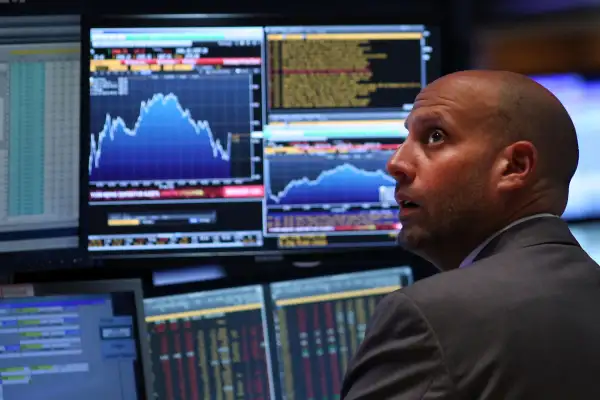How to Protect Your Savings From Another Flash Crash
Money is not a client of any investment adviser featured on this page. The information provided on this page is for educational purposes only and is not intended as investment advice. Money does not offer advisory services.

It’s impossible for us human retail investors to compete with computers—and with those big players who use them so well. But you don’t really have to compete with them in order to succeed as an investor.
However, you do have to make sure that computers don’t force you to inadvertently buy too high—or sell too low.
Even though the computer games are ultra-sophisticated, there are simple ways to protect yourself if, like me, you do your own trades online rather than using a broker or other intermediary.
A little background first.
As I’m sure you know, markets are becoming increasingly automated, with high-frequency traders swapping billions of dollars of securities back and forth in less time than it takes you or me to blink.
Because of computers’ increasing role—and humans’ decreasing role—markets have become prone to hiccups: sudden up or down movements that have nothing to do with economic fundamentals but are caused by computer glitches, market weirdness, or possibly by quant types trying to rig the game.
The most famous hiccup is the flash crash of May 6, 2010 when the Dow fell almost 1,000 points in an eye-blink, then bounced almost all the way back up. (Earlier this year, the U.S. government charged a London-based trader with helping cause the crash by trying to manipulate markets.)
Then there’s the flash crash of ’15, which took place in late August.
Computers trading with each other begat all sorts of oddities, including sudden drops of 20% or more in large, heavily-traded stocks like General Electric and Ford and CVS Health. In addition, some major exchange-traded funds (ETFs) either didn’t trade at all for a while—or changed hands at prices way different than the value of their underlying assets. That’s something that isn’t supposed to happen.
What can you, as an individual investor, do to make sure that you don’t get lots less for the GE or CVS or ETF shares you’re selling than you expected? Or to avoid buying into an up-hiccup, and paying way more than you expected?
There’s a two-word solution: “limit orders.”
Instead of submitting your trade at the market price, place a limit order. You check the “limit order” box on the site you’re using, and set a specific price as the most you are willing to pay if you’re buying, or the least that you’re willing to accept if you’re selling. I generally pick numbers about three percent above the current market for buying, and about three percent below market for selling.
I’ve never had a transaction fail to go through because of the limits I’ve set to protect myself from computers playing games.
It takes a few seconds more to place a limit order than a market order. But it doesn’t affect the price you pay to trade, and it protects you against hiccups. Think of it as hiccup insurance.
Free insurance—that’s the kind I like. And the kind you might consider getting for yourself to make sure you don’t get ripped off by computers—and by the big players who use them so well.
Read next: An Almost Sure-Fire Way to Convince Your Loved Ones to Start Investing Now
